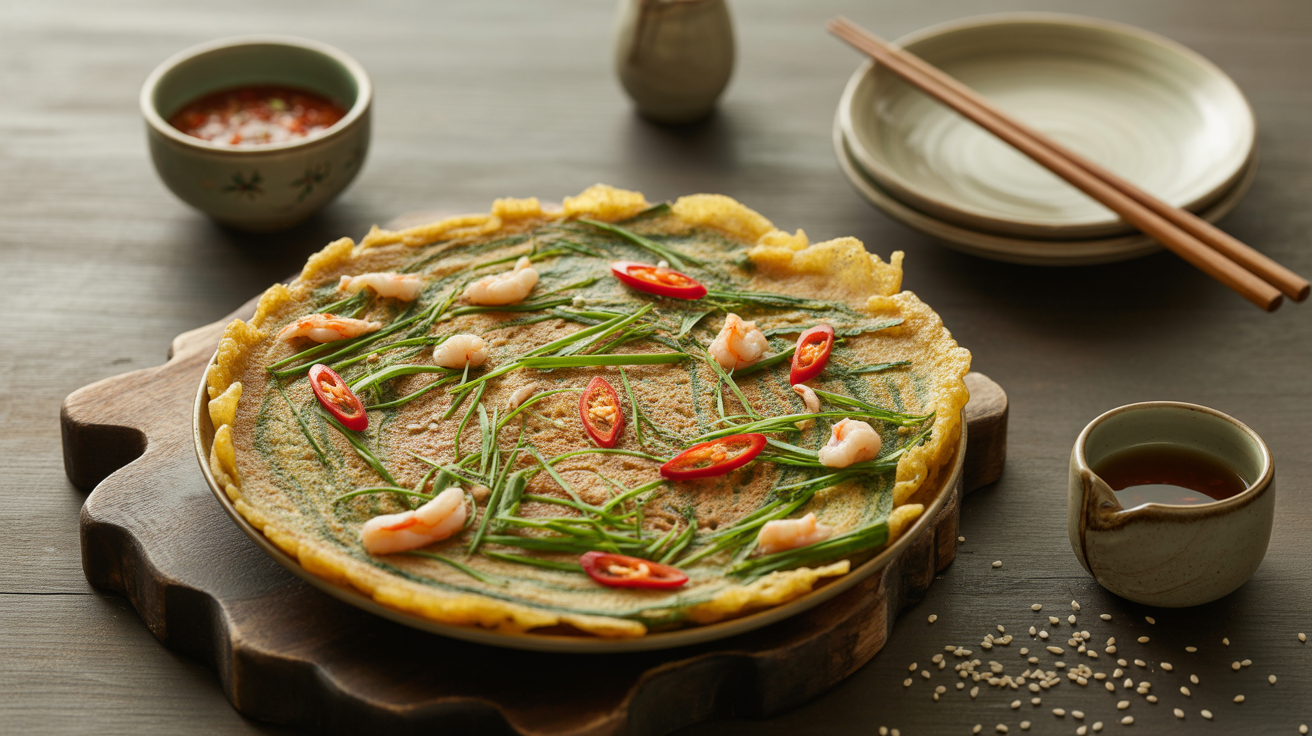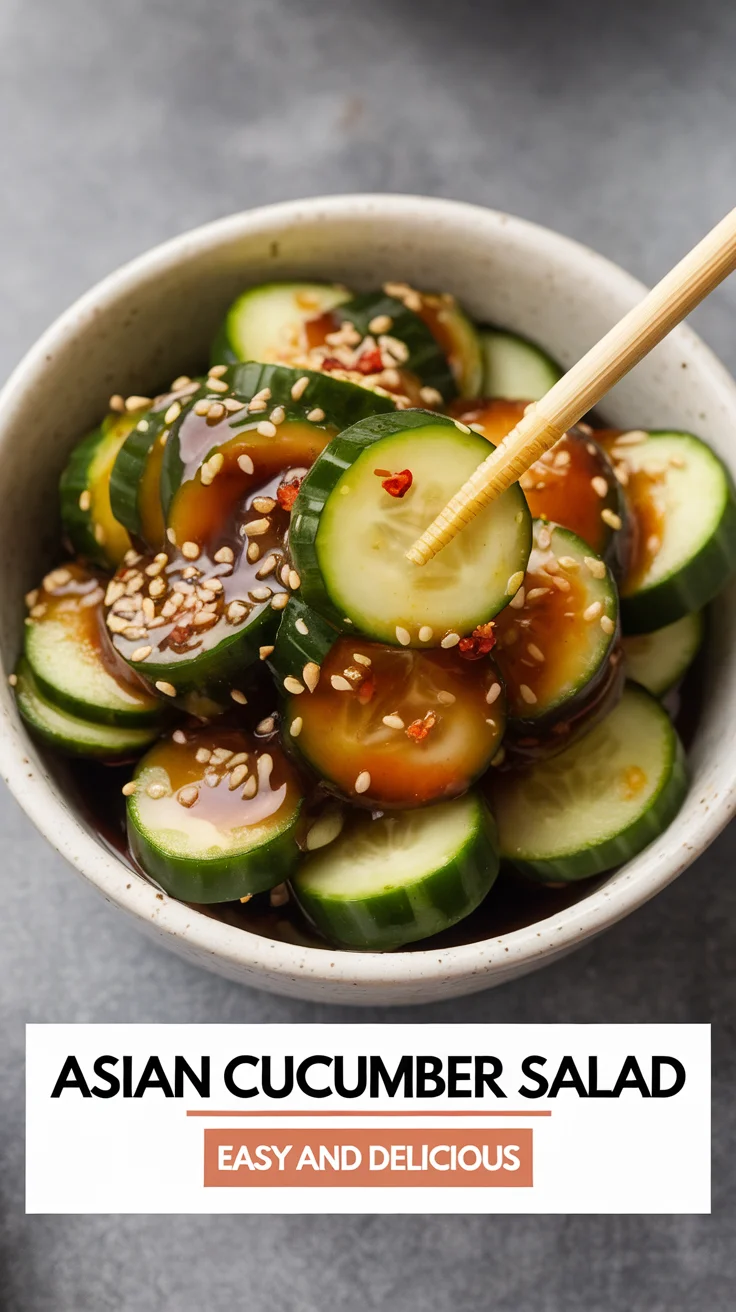Craving something crispy on the outside, chewy on the inside, and filled with a gooey brown sugar-cinnamon filling? Meet Hotteok (호떡) – the Korean pancake recipe that will warm your soul with every bite. This beloved Korean street food is a staple during cold winters in South Korea, often served sizzling hot by street vendors and enjoyed as a nostalgic snack or sweet treat.
In this article, we’ll dive deep into everything you need to know about making Hotteok, from the history of this delicious Korean dessert to a detailed, step-by-step recipe you can recreate at home. Whether you’re new to Asian desserts or a seasoned explorer of Korean food, this guide will turn you into a Hotteok pro.
What is Hotteok?
Hotteok is a stuffed Korean pancake made from a yeasted dough and filled with a mixture of brown sugar, cinnamon, and chopped nuts. When cooked on a hot griddle or skillet, the dough puffs and crisps up, while the filling melts into a sweet, sticky syrup that oozes with every bite.
Hotteok originated from Chinese merchants who settled in Korea during the late 19th century. Over time, Koreans adapted it into their own version of a sweet pancake, and it quickly became a wintertime favorite.
Sold primarily by street vendors, Hotteok is often eaten with one hand, wrapped in a paper sleeve, and best enjoyed while still hot. Today, it’s considered one of the most iconic Korean street foods, loved by all generations.
Why You’ll Love This Korean Pancake Recipe
- ✅ Warm and comforting: Perfect for cold weather or cozy weekends.
- ✅ Easy to make at home: No special equipment needed.
- ✅ Customizable filling: Use nuts, seeds, or even go savory!
- ✅ Cultural experience: Dive into the flavors of Korea from your own kitchen.
- ✅ Kid-friendly fun: Great activity for families or beginner cooks.
Whether you’re making a Korean dessert for a themed dinner or just looking for something different and delicious, this Korean pancake recipe is a must-try.
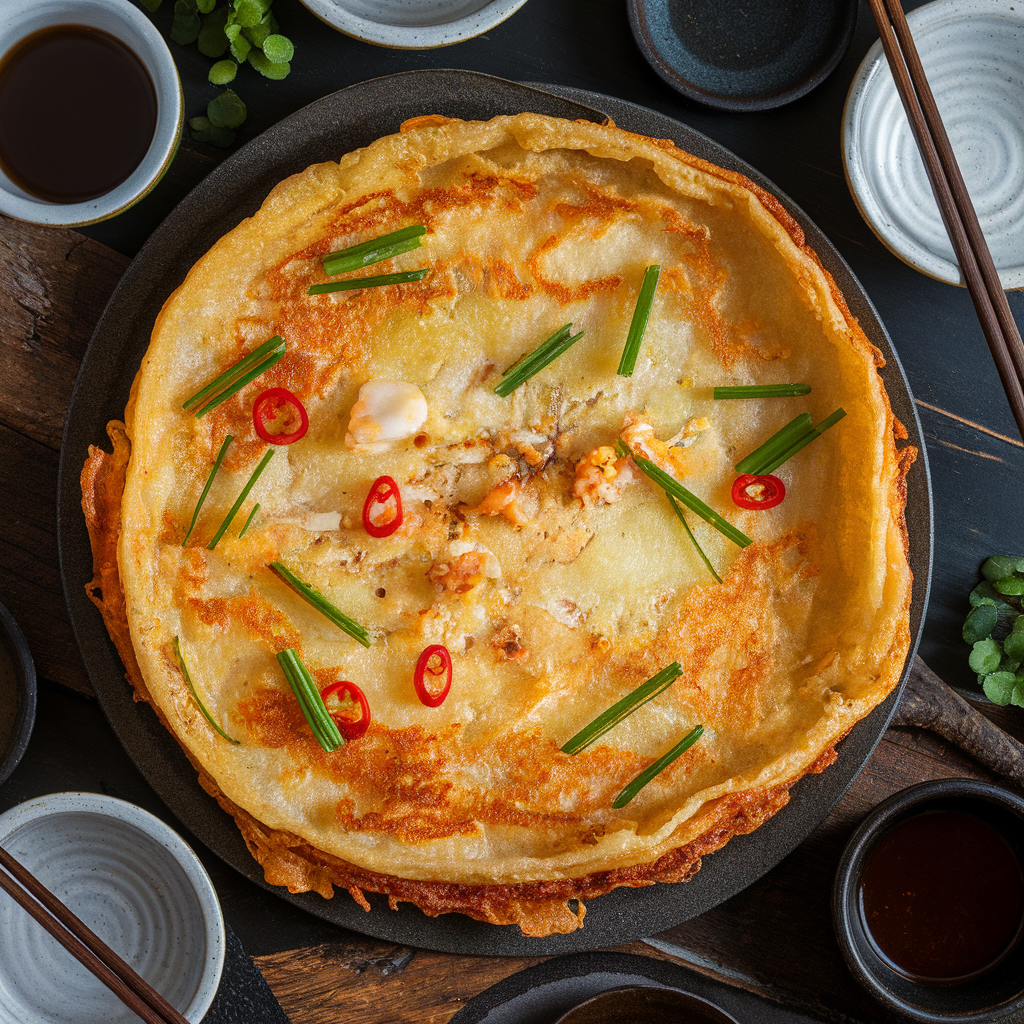
Ingrédients
Pour la Pâte:
- 2 cups (240g) all-purpose flour
- 1 tablespoon sugar
- 1 teaspoon instant yeast
- ½ teaspoon salt
- ¾ cup (180ml) warm water (100–110°F / 38–43°C)
- 1 tablespoon vegetable oil (plus more for frying)
For the Filling:
- ⅓ cup brown sugar
- 1 teaspoon ground cinnamon
- 2 tablespoons chopped walnuts (or other nuts like peanuts, almonds, pecans)
- ½ tablespoon roasted sesame seeds (optional)
Tip: You can also add a pinch of black pepper for a subtle kick or shredded coconut for texture.
Equipment You’ll Need
- Large mixing bowl
- Spatula or wooden spoon
- Measuring cups and spoons
- Plastic wrap or a towel for covering dough
- Flat surface for shaping pancakes
- Frying pan or non-stick skillet
- Flat spatula or pancake press (a wide cup bottom works too)
Étape par Étape les Instructions
Step 1: Make the Dough
In a large mixing bowl, whisk together the flour, sugar, salt, and yeast. Slowly pour in warm water and oil while mixing until a sticky dough forms. Knead the dough for 3–5 minutes in the bowl until it’s smooth and elastic. You can lightly oil your hands to prevent sticking.
Cover the bowl with plastic wrap or a clean towel. Let the dough rise in a warm spot for about 1 hour or until it doubles in size.
Pro Tip: If your kitchen is cold, you can place the bowl in an oven (turned off) with the oven light on to help the dough rise faster.
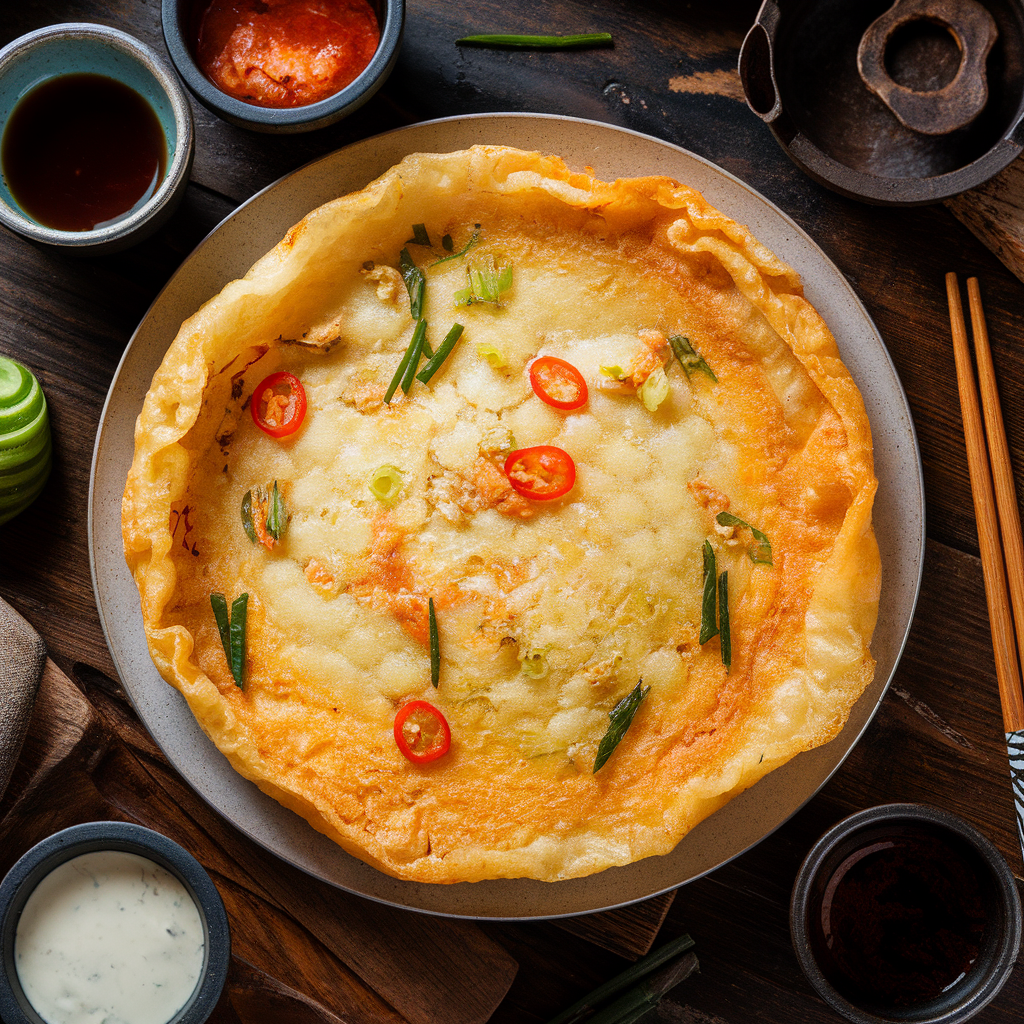
Step 2: Prepare the Filling
While the dough is rising, prepare your filling. In a small bowl, mix the brown sugar, cinnamon, chopped nuts, and sesame seeds. This mixture should be grainy and crumbly, not wet. Set it aside.
Step 3: Shape the Pancakes
Once the dough has doubled in size, punch it down and divide it into 6–8 equal portions. Lightly oil your hands and flatten one dough ball into a circle (about 3–4 inches wide).
Place a heaping tablespoon of the sugar-nut filling in the center. Pinch the edges of the dough together to seal the filling inside, forming a round ball.
Place the filled dough seam-side down on a lightly oiled surface. Repeat with the remaining dough.
Step 4: Cook the Hotteok
Heat a non-stick skillet or pan over medium heat and add a thin layer of oil.
Place one filled dough ball onto the skillet, seam side down. Let it cook for 30 seconds, then gently flatten it with a spatula or pancake press to about ½-inch thickness.
Cook for 1–2 minutes, or until the bottom is golden brown. Flip and cook the other side for another 1–2 minutes. If needed, flip one more time and cover the pan with a lid to help the inside cook fully and the filling melt.
Remove from the pan and let cool for a minute before eating — the filling will be extremely hot.
Variantes à Essayer
- Savory Hotteok: Replace the sugar filling with sautéed vegetables, ground meat, or cheese for a savory twist.
- Matcha Hotteok: Add 1 teaspoon matcha powder to the dough for a green tea flavor.
- Chocolate Banana Filling: For a dessert variation, fill with chocolate chips and a slice of banana.
- Vegan Hotteok: This recipe is already vegan if you use plant-based oil and check that your sugar is vegan-certified.
Conseils De Dégustation
Hotteok is best served hot and fresh from the pan. You can eat it as a snack on its own or with a warm cup of tea, such as barley tea or green tea. For a dessert-style presentation, drizzle with a little honey or dust with powdered sugar.
Pair it with:
- Korean milk tea
- Sweet rice punch (Sikhye)
- Fruit banchan (side dishes)
- Ice cream (for a fusion treat)
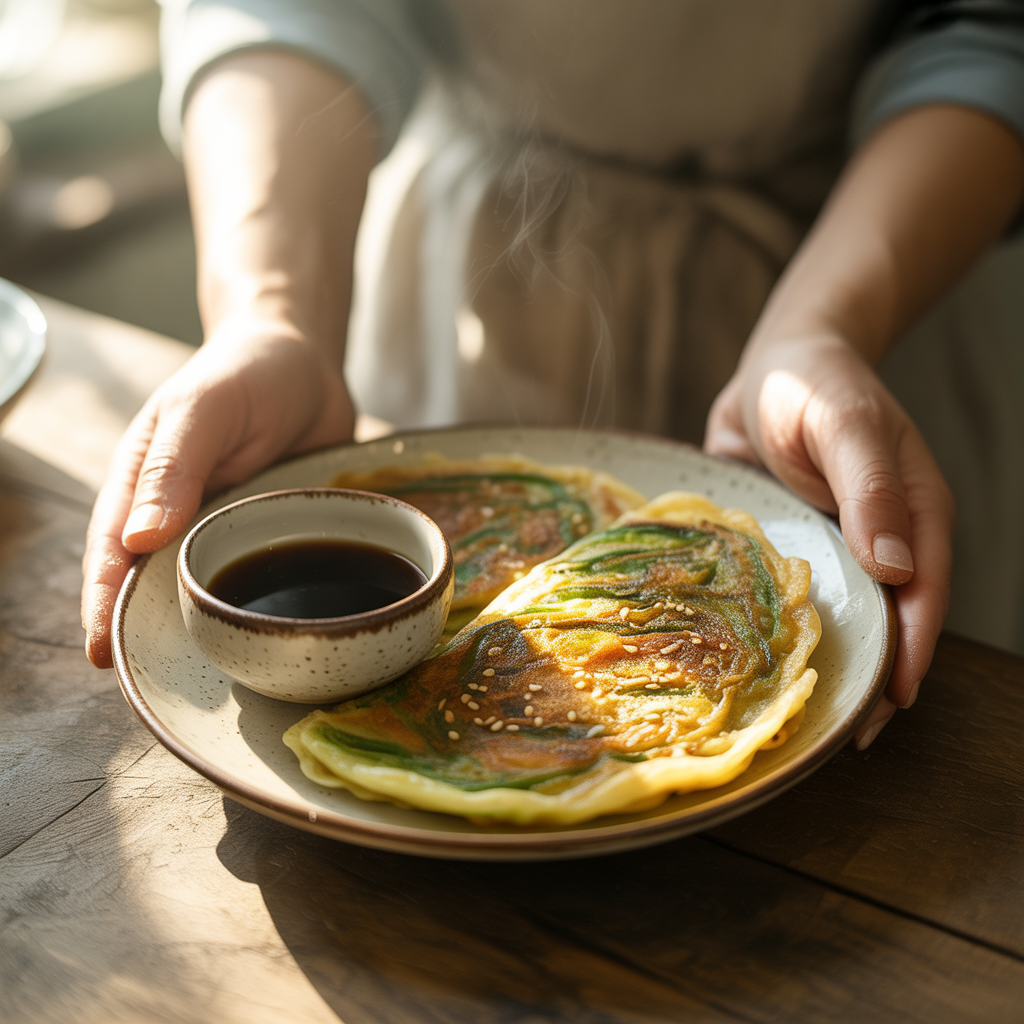
Storage and Reheating Tips
De stockage: You can store leftover Hotteok in an airtight container in the refrigerator for up to 3 days.
Réchauffage: Reheat in a skillet over medium heat or toast in an air fryer or toaster oven until the exterior is crisp and the inside is warm. Avoid microwaving, as it softens the outer crispiness.
Cultural Notes & Fun Facts
- Hotteok is most commonly eaten in winter, but these days you can find it year-round in Korean night markets and even frozen in supermarkets.
- There are regional varieties throughout Korea, including ones made with glutinous rice flour or stuffed with red bean paste.
- Some street vendors press the Hotteok with a special tool that gives it a flower-like imprint.
- The filling can differ by vendor, with some adding sunflower seeds, pumpkin seeds, or even mozzarella cheese.
Faq
Is Hotteok a dessert or snack?
Both! It’s traditionally considered a snack, but because of the sweet filling, it also makes a satisfying Korean dessert.
Can I make Hotteok gluten-free?
You can experiment with gluten-free flour blends, but the texture may differ. Adding xanthan gum helps mimic the elasticity of wheat-based dough.
Can I freeze Hotteok?
Yes! You can freeze uncooked filled dough balls. When ready to eat, thaw and cook them fresh. Cooked Hotteok can also be frozen and reheated later.
Réflexions Finales
If you’re looking for a Korean pancake recipe that combines the best of chewy dough and molten brown sugar filling, Hotteok is a must-try. It’s fun to make, incredibly satisfying to eat, and offers a taste of Korea’s vibrant street food culture in every bite.
So next time you’re in the mood for a warm, sweet treat, skip the store-bought snacks and whip up this Korean dessert droit à la maison.
